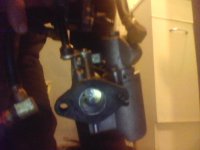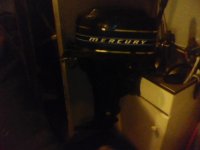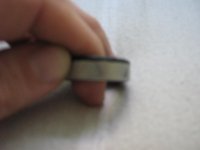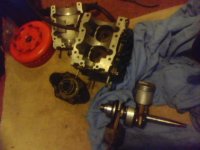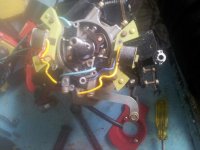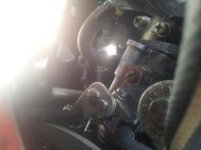Hi My 1973 Merc 7.5 Hp (decal blueband 75) started for a split second when i put fuel direct in the cylinders and reinserted sparkplugs, but it then stopped. It sounded great, but i noticed i had carb blow back which is why it wasnt starting. I took the carb off and put a piece of newspaper over the inlet and got hardly any blow or suction (but i was having to hold the paper while pulling the cord), but i did have fuel dripping from the carb before i pulled it off so im picking it had some suction to cause that, unless priming the bulb could of caused that.
Anyway i had to take the whole engine apart to look at the reeds and they were fine. There was however a look of lack of oil in the bottom cylinder. The lower bearing was dry whereas the top bearing wasnt. The bottom seal looked slightly torn on the bottom of it, i could see the bottom spring coming through but the rest of it seemed ok.
Im wondering if the lower seal could cause this or is this reed unit meant to be sealed to the crankcase with crankcase cement?
I just cant see how a bottom seal would cause this if the carb was also dribbling fuel while trying to start it??
Thanks
Anyway i had to take the whole engine apart to look at the reeds and they were fine. There was however a look of lack of oil in the bottom cylinder. The lower bearing was dry whereas the top bearing wasnt. The bottom seal looked slightly torn on the bottom of it, i could see the bottom spring coming through but the rest of it seemed ok.
Im wondering if the lower seal could cause this or is this reed unit meant to be sealed to the crankcase with crankcase cement?
I just cant see how a bottom seal would cause this if the carb was also dribbling fuel while trying to start it??
Thanks


